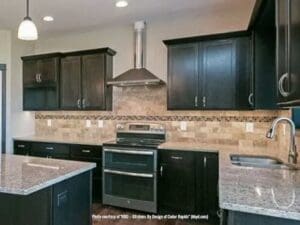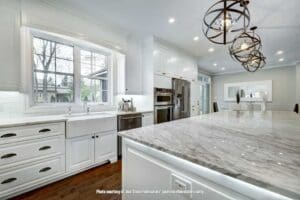Granite vs. Quartz Countertops: Cost, Durability, and Style
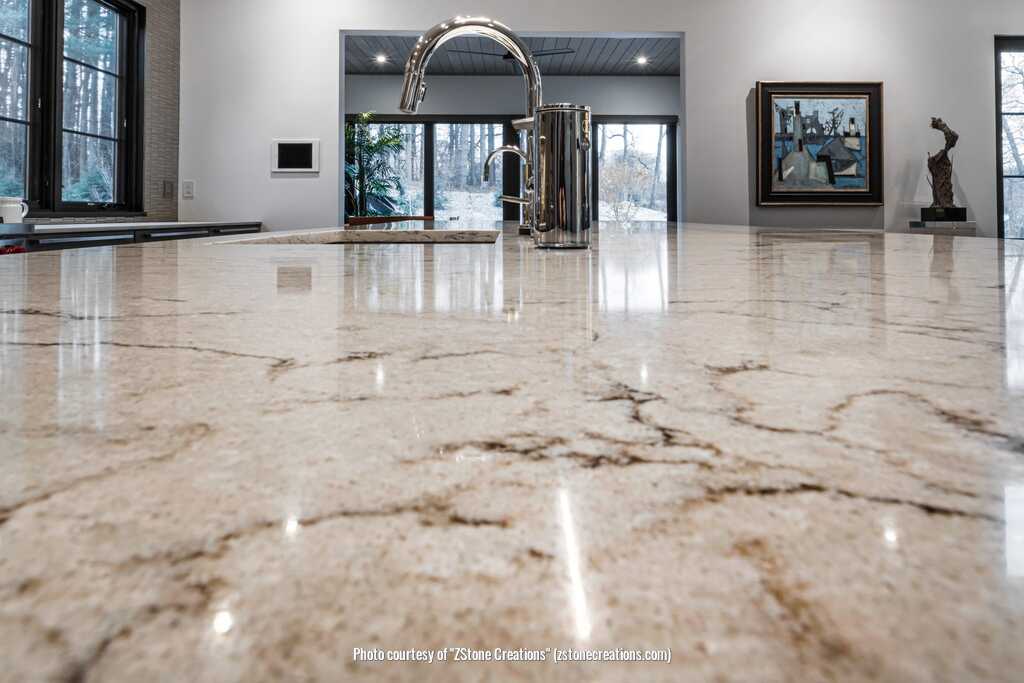
Source: ZStone Creations (zstonecreations.com)
Introduction
If you and your family have decided that it's time to replace your kitchen countertops, you've probably spent a lot of time on the internet looking for an answer to the question, "Which countertop material is the best—natural stone or engineered stone?” If this question is still open to you, we suggest you read our article “Kitchen Countertop Options: A Comprehensive Guide” (link to article), where we explore the different types of kitchen countertops in detail.
After studying a lot of information and doing our own research, we can say that granite countertops are a popular choice among natural materials and quartz is a popular choice among man-made materials, offering not only a stylish look but also superior functionality.
Each material comes with its own unique qualities, which can make the decision challenging for homeowners looking to create their dream kitchen. Today, we want to help you understand the key differences between granite and quartz so you can make an informed choice that suits your preferences and needs.
Material Overview
1.1 Granite is one of the oldest and most majestic natural materials that exists on Earth. It is formed in the depths of our planet by the crystallization of magma. Granite is composed mainly of quartz, feldspar and mica, and its characteristic patterns and textures are formed during the cooling process of igneous rocks.
This makes each granite countertop unique, because even two identical stones will not have exactly the same patterns and colors. Each piece of granite is a kind of natural masterpiece created millions of years ago.
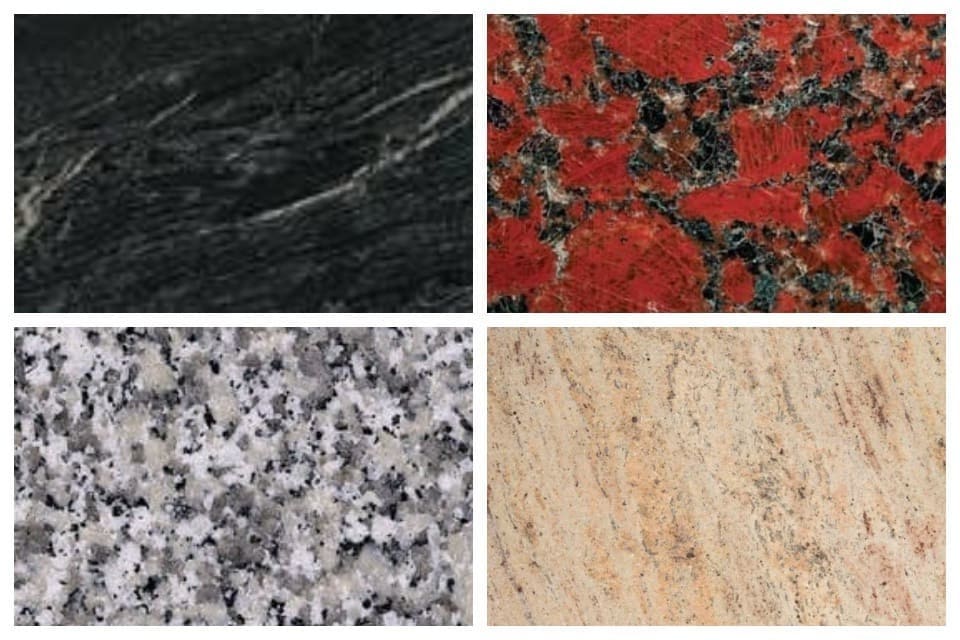
Granite Color Variations
Trends in granite countertop design
While design trends evolve, classics remain relevant through the years. To these classics just can be attributed granite countertops, which are characterized by:
Minimalism with an emphasis on naturalness. Granite with large, expressive veins and natural hues such as charcoal gray, sand, cream and graphite are particularly popular.
Monochromatic palettes. Black and white granite with minimal contrasting patterns has become the choice for modern and minimalist interiors.
Matte finishes. While polished granite has long been a favorite, matte and textured finishes are gaining popularity, offering a more natural and sophisticated look.
Large-format slabs. In the trend of solid granite surfaces without visible seams, creating a sense of monolithic.
Is granite popular today?
Of course, granite continues to be in demand. It is chosen for its unique natural pattern, durability and status. While quartz has gained popularity, granite remains a cornerstone of premium design, particularly for those who value natural materials such a:
- Luxury hotels and restaurants where presentability and durability are important.
- Premium homes, especially for kitchens and bathrooms.
- Luxury offices and salons, where natural materials emphasize prestige.
- High-end brand stores, where granite is used for counters and wall panels.
1.2 Quartz countertops are artificially created materials that have become popular due to their unique properties and wide design possibilities.
The countertops are not created using pure quartz, but rather a blend of 90-95% natural quartz, which combines the strength of the stone, and polyurethane resins that are bonded with pigments. This approach creates perfectly uniform and predictable patterns that natural stones like granite do not have. Craftsmen can vary the texture, color and add different elements such as glass or metal inclusions, which opens up a wide range of design horizons.
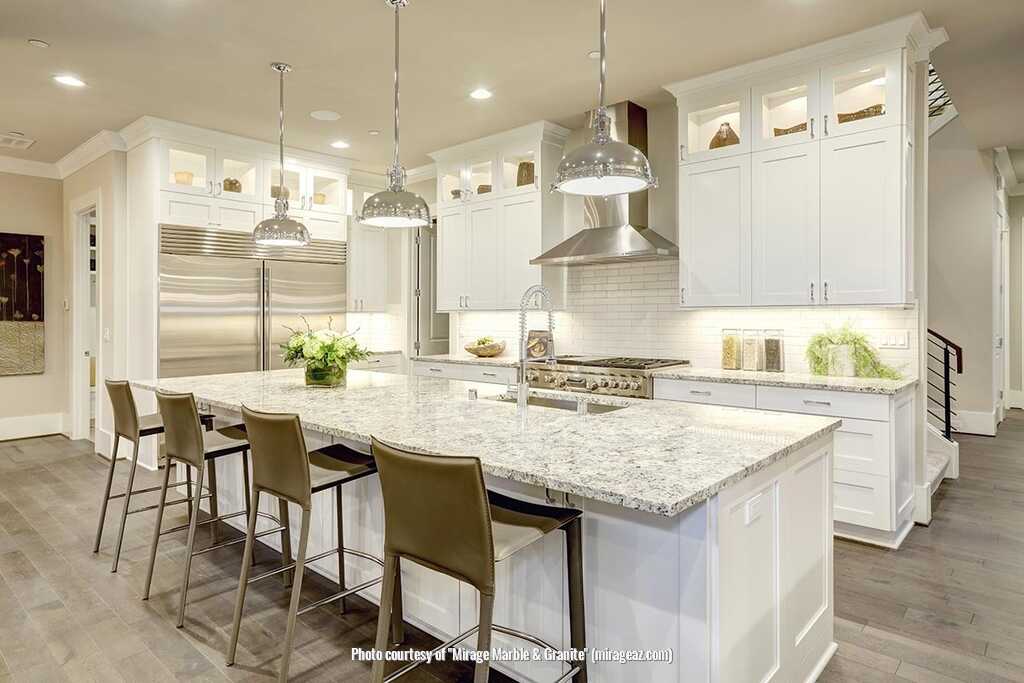
Source: Mirage Marble & Granite (mirageaz.com)
Trends in quartz countertop design
Quartz has become a symbol of modernity and technology. Its design possibilities are almost limitless, which allows you to follow the current trends:
- Imitating natural materials. Quartz surfaces that reproduce the texture of marble, travertine or the same granite are extremely popular.
- Uniform textures. Quartz with a minimalistic design without pronounced veins fits perfectly into modern interiors.
- Color Accents. Along with neutral shades, quartz is actively used in deep colors: emerald green, deep blue or even terracotta.
- Glossy finish. Unlike granite, a bright glossy finish is on trend, which adds impact and visual volume.
Is quartz popular today?
Quartz has become a designer favorite in recent years. Its versatility and innovative features make it the top choice for modern interiors, particularly for:
- Modern homes and apartments. Particularly appreciated by young families for its minimal maintenance and stylish look.
- Kitchens and bathrooms in urban areas where durability and clean lines are important.
- Commercial spaces such as cafes, restaurants and offices where a balance between beauty and practicality is required.
- Medical and laboratory spaces, thanks to its hygienic and chemical resistance.
1. Comparative table
|
Criteria |
Granite |
Quartz |
|
Strength |
Granite is one of the hardest natural materials (7 on the Mohs scale), which makes it resistant to mechanical damage. However, due to natural micro-cracks, the stone can be vulnerable to strong impacts. |
Quartz is also a durable material, but its hardness is slightly lower (about 6 on the Mohs scale). It can be damaged by strong impacts with heavy objects such as frying pans. This is due to the use of polymer resins, which add flexibility but make the material less rigid. |
|
Thermal resistance |
Granite can withstand high temperatures. A hot pan can be placed directly on the worktop without fear of damaging the surface. However, the stone may crack if the temperature fluctuates sharply. |
Quartz is sensitive to high temperatures due to its polymer resin content. Contact with hot objects may cause discoloration or deformation of the surface. The use of supports is recommended for protection. |
|
Scratch resistance |
Granite is scratch resistant, but overly sharp or metal objects can leave marks, especially if they are used frequently. |
Quartz is also scratch-resistant, though not as much as granite. Care is advised when using kitchen knives or other sharp objects intensively. |
|
Stain resistance |
Because of its porous structure, granite can absorb liquids such as wine, oil or coffee if its surface has not been sealed. Stains can be difficult to remove. |
Quartz is stain resistant due to its non-porous structure. Even aggressive substances such as wine or vinegar do not leave marks if removed in time. This makes quartz a more practical choice for those who cook frequently. |
|
Hygiene |
The porosity of granite allows bacteria and dirt to penetrate, especially if the surface has not been properly treated. This makes it less suitable for use in a kitchen without regular maintenance. |
Quartz is one of the most hygienic materials. Its non-porous structure prevents the penetration of bacteria, making it safe for handling food. This is especially important for families with children. |
|
Cleansing |
For cleaning, it is recommended to use special cleaning agents to maintain the appearance and remove grease stains. It is important to avoid abrasive materials that may damage the polish. |
Quartz is easy to clean with a damp cloth and mild detergent. Its smooth surface is resistant to dirt and grease stains, making it easy to maintain. Even with minimal care, the material will retain its original appearance for many years. |
|
Care |
Requires regular sealing (every 1-2 years) to protect the porous surface from liquid absorption and stains. Can only be cleaned with mild agents so as not to damage the polish. |
Quartz does not require sealing as its surface is non-porous. For maintenance, it is sufficient to wipe the surface with a damp cloth and normal detergent. This saves time and makes the material more convenient to use. |
2. Cost of granite and quartz
Granite, formed millions of years ago, stands as a timeless blend of natural beauty and elegance. Several factors affect its final cost:
Type of Granite – Classic, budget-friendly options start at $40 per square foot, while rare and exclusive stones — such as those sourced from Brazil — can cost up to $150 per square foot.
Processing – The more intricate the craftsmanship, the higher the cost. Custom edge profiles and high-gloss polishing require additional labor and increase the price.
Installation complexity. Countertops with unusual shapes, integrated elements, or extensive customization require more time and skill, leading to higher contractor fees.
Quartz, on the other hand, is a story about convenience and style at the same time. It's an artificial material that's designed specifically for those who like order and variety.
Classic Quartz: If you’re considering timeless white quartz with a minimalistic structure, prices typically start at $50 per square foot.
Custom Quartz: For those seeking personalized designs, including intricate patterns or unique color blends, expect costs to begin at $200 per square foot.
Also, don't forget about installation. The more details - such as intricate sink cutouts or integrated lighting - the higher the cost of labor.
Keep in mind that the numbers above are estimates and may vary depending on your individual project. However, if you'd like a more accurate quartz countertops quote, go to our “Average Cost” section and choose your city!
FAQs about granite and quartz countertops
Which is better: granite or quartz?
It depends on your priorities. If naturalness, uniqueness and high temperature resistance are important, choose granite. If you need a practical, non-porous, hygienic material with a wide range of designs - quartz.
What is more expensive: granite or quartz countertops?
Prices are comparable on average, but quartz countertops are more often more expensive, especially when it comes to design options. However, exclusive types of granite can also be very expensive.
Can I put hot pans on granite and quartz?
Granite can withstand high temperatures, but cracks can appear if there are sudden changes (for example, ice water right after a hot pan). Quartz is more sensitive to temperature - hot objects can discolor or damage the surface, so it's better to use coasters.
How durable are quartz and granite countertops?
Both materials are very durable and with proper care will last for decades. Granite is literally a stone that can withstand centuries, and quartz is resistant to most household damage.
Which material is more expensive to install?
Depends on the project. Both materials require professional installation, but granite slabs are more difficult to fit due to their unique texture and quartz is heavier. The average installation cost for both materials is similar.
Which material is better for a kitchen: granite or quartz?
Quartz is more often chosen for kitchens because of its hygiene, ease of maintenance and resistance to stains. But if the naturalness and warmth of natural stone is important to you, granite is also a great option!
Conclusion
If you're looking for a natural, durable and beautiful material with unique textures that last for decades, granite is the ideal choice. However, if you prefer a low-maintenance surface with strong resistance to stains and bacteria, along with a consistent, modern look, quartz is a fantastic alternative.
Choosing between granite and quartz depends on your preferences, lifestyle and how much time, effort and money you are willing to put into caring for your countertops.
We hope this article helped you make an informed choice for the best countertop for you and your family!






